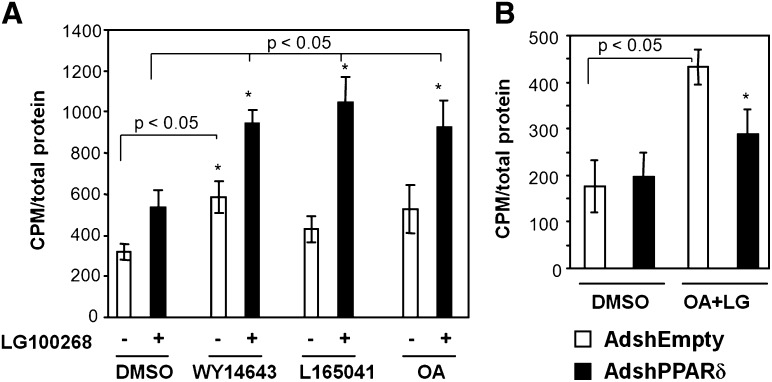Fig. 5.
Oleic acid activation of PPARδ increases fatty acid oxidation capacity in synergy with RXRα in insulin-secreting cells. A: INS-1E cells were incubated for 24 h in RPMI (11 mM glucose) with DMSO, the specific PPARα agonist WY14.643 (30 μM), or the specific PPARδ agonist L165041 (1 μM) in the presence or absence of the RXRα agonist LG100268 (0.2 μM). Cells were incubated with [1-14C]oleic acid for 4 h in serum-free RPMI1640 containing 5 mM glucose, and oxidation was measured in triplicate, background was subtracted, and values were normalized to total cellular protein. B: INS-1E cells were transduced with adenoviral vectors (∼20 pfu/cell) expressing shRNA against PPARδ (AdshPPARδ) or a control shRNA vector (AdshEmpty). After 24 h in RPMI (11 mM glucose), DMSO or oleic acid (OA; 100 μM) together with LG100268 (LG; 0.2 μM) was added to the media. Cells were incubated for another 24 h, and fatty acid oxidation was measured as described above. The experiments were performed in triplicate, and standard deviations are indicated. Results are representative of three independent experiments, and P values were calculated using two-way ANOVA. Addition of LG100268 differs from corresponding DMSO control (*P < 0.05).

